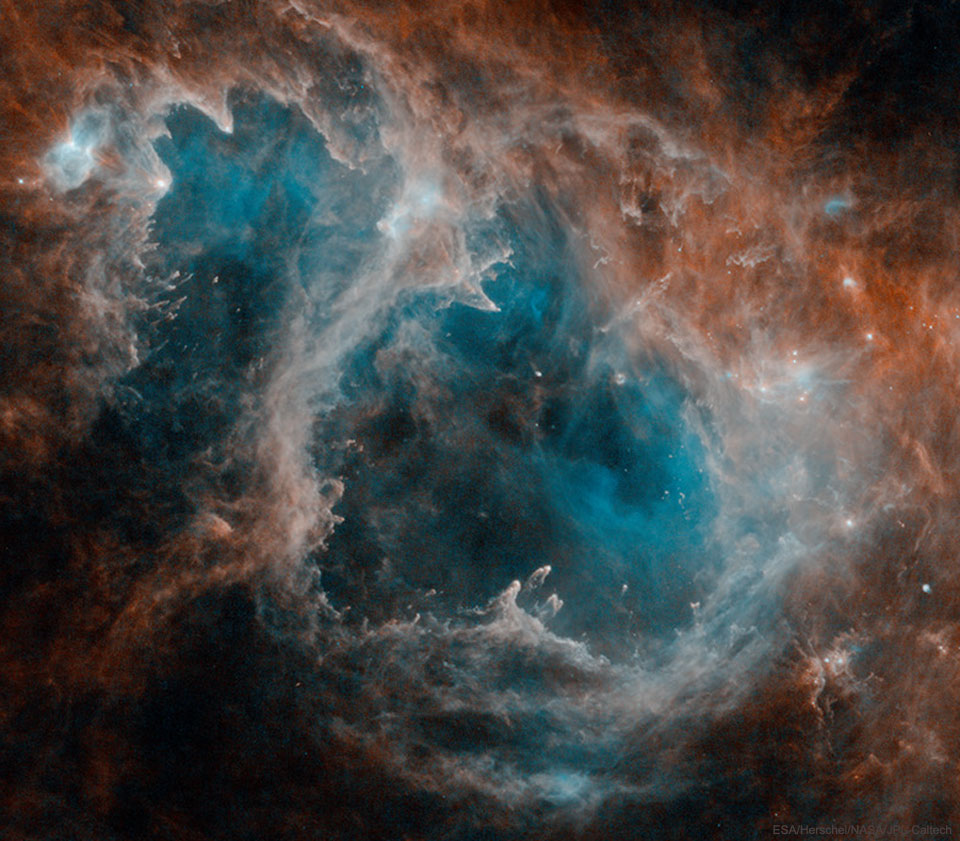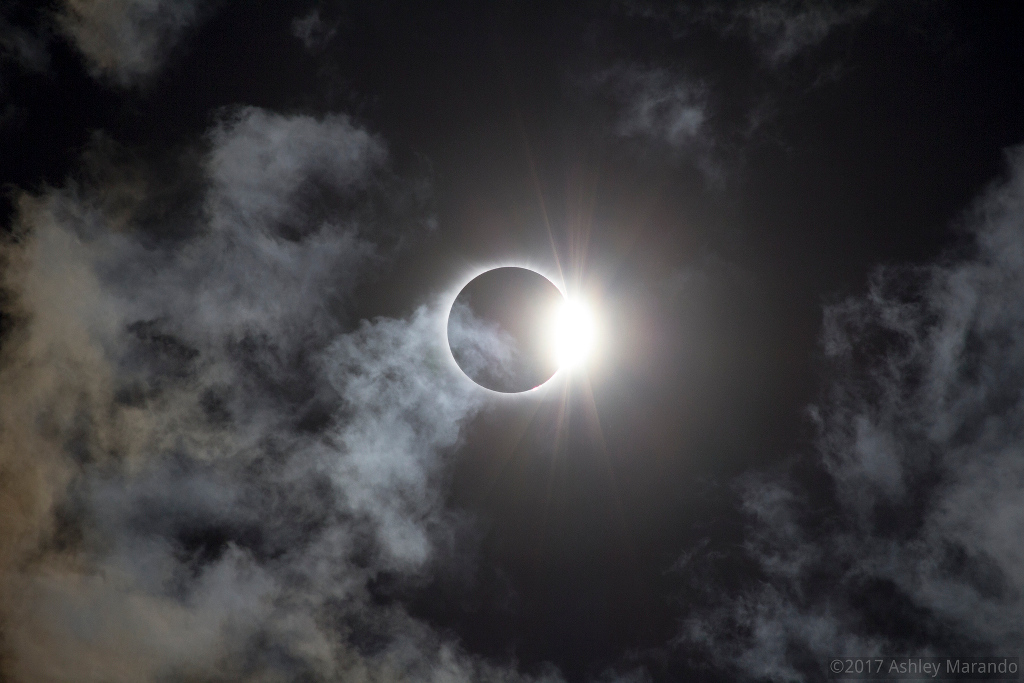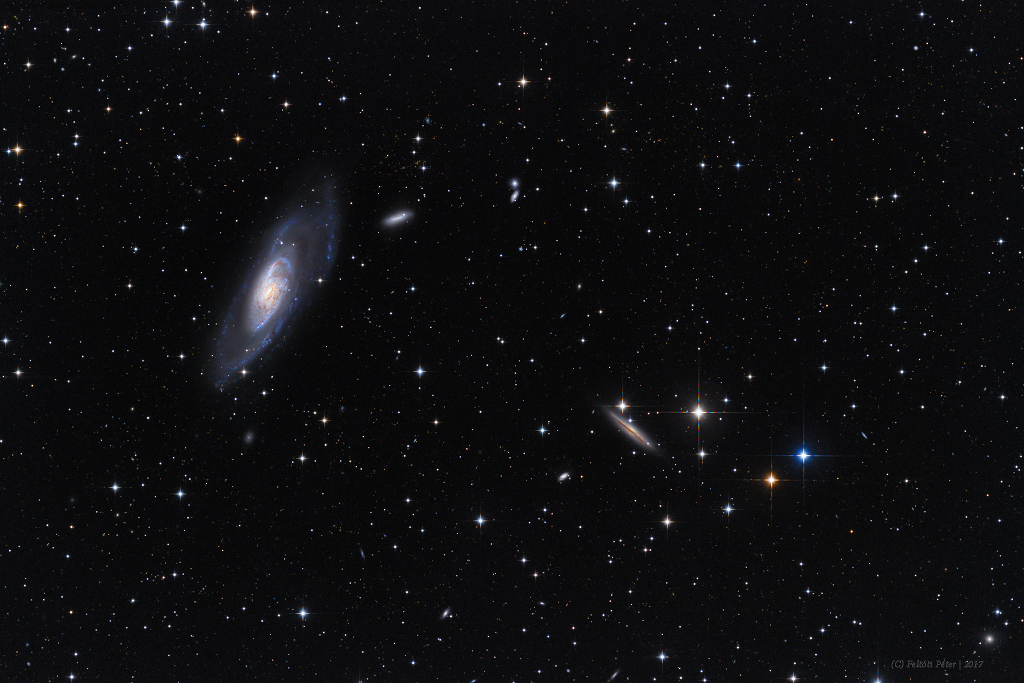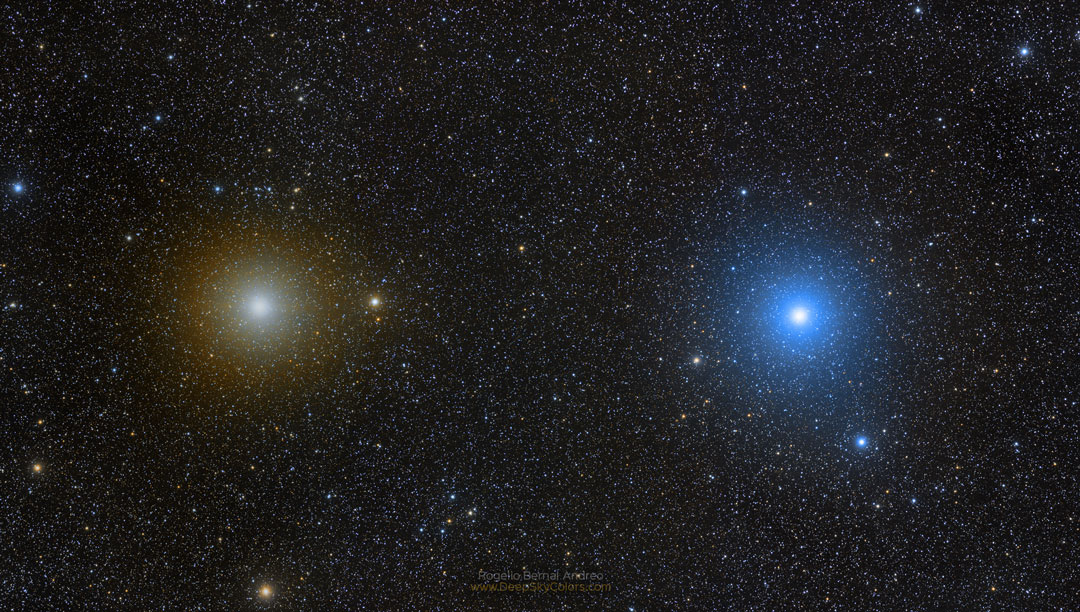


Astronomy Picture of the Day for 2017-10-14 12:30:01.604840
Astronomy Picture of the Day (Unofficial) at 2017-10-14T17:30:02Z
Discover the cosmos! Each day a different image or photograph of our fascinating universe is featured, along with a brief explanation written by a professional astronomer.
All-Sky Steve
Image Credit & Copyright: Alan Dyer, Amazingsky.com, TWANExplanation: Familiar green and red tinted auroral emission floods the sky along the northern (top) horizon in this fish-eye panorama projection from September 27. On the mild, clear evening the Milky Way tracks through the zenith of a southern Alberta sky and ends where the six-day-old Moon sets in the southwest. The odd, isolated, pink and whitish arc across the south has come to be known as Steve. The name was given to the phenomenon by the Alberta Aurora Chasers Facebook group who had recorded appearances of the aurora-like feature. Sometimes mistakenly identified as a proton aurora or proton arc, the mysterious Steve arcs seem associated with aurorae but appear closer to the equator than the auroral curtains. Widely documented by citizen scientists and recently directly explored by a Swarm mission satellite, Steve arcs have been measured as thermal emission from flowing gas rather than emission excited by energetic electrons. Even though a reverse-engineered acronym that fits the originally friendly name is Sudden Thermal Emission from Velocity Enhancement, his origin is still mysterious.
Tomorrow's picture: the origin of gold Stephen Sekula, eomer likes this.

Astronomy Picture of the Day for 2017-10-04 12:30:02.426300
Astronomy Picture of the Day (Unofficial) at 2017-10-04T17:30:04Z
Discover the cosmos! Each day a different image or photograph of our fascinating universe is featured, along with a brief explanation written by a professional astronomer.
The Soul Nebula in Infrared from Herschel
Image Credit & License: ESA, Herschel Space Obs., NASA, JPL-CaltechExplanation: Stars are forming in the Soul of the Queen of Aethopia. More specifically, a large star forming region called the Soul Nebula can be found in the direction of the constellation Cassiopeia, who Greek mythology credits as the vain wife of a King who long ago ruled lands surrounding the upper Nile river. The Soul Nebula houses several open clusters of stars, a large radio source known as W5, and huge evacuated bubbles formed by the winds of young massive stars. Located about 6,500 light years away, the Soul Nebula spans about 100 light years and is usually imaged next to its celestial neighbor the Heart Nebula (IC 1805). The featured image, impressively detailed, was taken in several bands of infrared light by the orbiting Herschel Space Observatory.
Follow APOD on Facebook: In English, Spanish, Portuguese, or Catalan
Tomorrow's picture: plutonian penitenteseomer likes this.

Raspbian Stretch has arrived for Raspberry Pi
Debian Project at 2017-08-25T19:18:05Z
Raspbian Stretch has arrived for Raspberry Pi https://www.raspberrypi.org/blog/raspbian-stretch/
eomer, Stephen Michael Kellat, EVAnaRkISTO likes this.
Krugor, Stephen Michael Kellat, EVAnaRkISTO shared this.

Astronomy Picture of the Day for 2017-08-25 12:30:01.736047
Astronomy Picture of the Day (Unofficial) at 2017-08-25T17:30:02Z
Discover the cosmos! Each day a different image or photograph of our fascinating universe is featured, along with a brief explanation written by a professional astronomer.
Diamond Ring in a Cloudy Sky
Image Credit & Copyright: Ashley MarandoExplanation: As the Moon's shadow swept across the US on August 21, eclipse chasers in the narrow path of totality were treated to a diamond ring in the sky. At the beginning and end of totality, the fleeting and beautiful effect often produces audible gasps from an amazed audience. It occurs just before or after the appearance of the faint solar corona with a brief ring of light and glimpse of Sun. In this scene from the end of totality at Central, South Carolina, clouds drift near the Sun's diamond ring in the sky.
Tomorrow's picture: pixels in space eomer likes this.

Astronomy Picture of the Day for 2017-07-29 12:30:01.709924
Astronomy Picture of the Day (Unofficial) at 2017-07-29T17:30:02Z
Discover the cosmos! Each day a different image or photograph of our fascinating universe is featured, along with a brief explanation written by a professional astronomer.
Aurora Slathers up the Sky
Image Credit: Jack Fischer, Expedition 52, NASAExplanation: Like salsa verde on your favorite burrito, a green aurora slathers up the sky in this June 25 snapshot from the International Space Station. About 400 kilometers (250 miles) above Earth, the orbiting station is itself within the upper realm of the auroral displays. Aurorae have the signature colors of excited molecules and atoms at the low densities found at extreme altitudes. Emission from atomic oxygen dominates this view. The tantalizing glow is green at lower altitudes, but rarer reddish bands extend above the space station's horizon. The orbital scene was captured while passing over a point south and east of Australia, with stars above the horizon at the right belonging to the constellation Canis Major, Orion's big dog. Sirius, alpha star of Canis Major, is the brightest star near the Earth's limb.
Tomorrow's picture: end of the world 
Astronomy Picture of the Day for 2017-07-07 12:30:01.665168
Astronomy Picture of the Day (Unofficial) at 2017-07-07T17:30:02Z
Discover the cosmos! Each day a different image or photograph of our fascinating universe is featured, along with a brief explanation written by a professional astronomer.
A View Toward M106
Image Credit & Copyright: Peter FeltotiExplanation: Big, bright, beautiful spiral, Messier 106 dominates this cosmic vista. The two degree wide telescopic field of view looks toward the well-trained constellation Canes Venatici, near the handle of the Big Dipper. Also known as NGC 4258, M106 is about 80,000 light-years across and 23.5 million light-years away, the largest member of the Canes II galaxy group. For a far away galaxy, the distance to M106 is well-known in part because it can be directly measured by tracking this galaxy's remarkable maser, or microwave laser emission. Very rare but naturally occuring, the maser emission is produced by water molecules in molecular clouds orbiting its active galactic nucleus. Another prominent spiral galaxy on the scene, viewed nearly edge-on, is NGC 4217 below and right of M106. The distance to NGC 4217 is much less well-known, estimated to be about 60 million light-years.
Tomorrow's picture: light-weekendeomer likes this.

Astronomy Picture of the Day for 2017-07-08 12:30:02.019247
Astronomy Picture of the Day (Unofficial) at 2017-07-08T17:30:02Z
Discover the cosmos! Each day a different image or photograph of our fascinating universe is featured, along with a brief explanation written by a professional astronomer.
Hidden Galaxy IC 342
Credit & Copyright: T. Rector (U. Alaska Anchorage), H. Schweiker, WIYN, NOAO, AURA, NSFExplanation: Similar in size to large, bright spiral galaxies in our neighborhood, IC 342 is a mere 10 million light-years distant in the long-necked, northern constellation Camelopardalis. A sprawling island universe, IC 342 would otherwise be a prominent galaxy in our night sky, but it is hidden from clear view and only glimpsed through the veil of stars, gas and dust clouds along the plane of our own Milky Way galaxy. Even though IC 342's light is dimmed by intervening cosmic clouds, this sharp telescopic image traces the galaxy's own obscuring dust, blue star clusters, and glowing pink star forming regions along spiral arms that wind far from the galaxy's core. IC 342 may have undergone a recent burst of star formation activity and is close enough to have gravitationally influenced the evolution of the local group of galaxies and the Milky Way.
Tomorrow's picture: when the stars come outeomer likes this.


A Manolita le da igual el calor que haga. Su cargador-cojín que no se lo quiten...
cronos shared this.

JanKusanagi at 2017-07-07T09:14:15Z
¿Modernizarse, esos?
Jaaaajajaja, ¡que bueno! xD
(De todas maneras están un pelín equivocados; el error de user/pass nunca dice que lo intentes "más tarde" :p)
EVAnaRkISTO, eomer likes this.

Astronomy Picture of the Day for 2017-07-03 12:30:02.209989
Astronomy Picture of the Day (Unofficial) at 2017-07-03T17:30:03Z
Discover the cosmos! Each day a different image or photograph of our fascinating universe is featured, along with a brief explanation written by a professional astronomer.
The Summer Triangle over the Great Wall
Image Credit & Copyright: Steed Yu & NightChina.netExplanation: Have you ever seen the Summer Triangle? The bright stars Vega, Deneb, and Altair form a large triangle on the sky that can be seen rising in the northern spring during the morning, and rising in the northern fall during the evening. During summer months, the triangle can be found nearly overhead near midnight as three of the brightest stars on the sky. Featured here, along with the arch of the central band of our Milky Way Galaxy, the Summer Triangle asterism was captured this spring over the Great Wall of China. This part of the Great Wall, a World Culture Heritage Site, was built during the 6th century on the Yan Mountains. At the summit is Wangjinglou Tower from which, on a clear night, the lights of Beijing are visible in the distance.
Tomorrow's picture: celestial fireworks 
Plasma 5.10 Beta is out!

“Monday, 15 May 2017. Today KDE has made a testing release of our desktop Plasma 5.10 with new features across the suite to give users an experience which lives up to our tagline: simple by default, powerful when needed. ”
dot.kde.org/2017/05/15/plasma-510-beta-slicker-desktop
\o/
EVAnaRkISTO, eomer, Carol Chen, der.hans likes this.
der.hans, JanKusanagi shared this.

Astronomy Picture of the Day for 2017-05-16 12:30:02.053663
Astronomy Picture of the Day (Unofficial) at 2017-05-16T17:30:02Z
Discover the cosmos! Each day a different image or photograph of our fascinating universe is featured, along with a brief explanation written by a professional astronomer.
Gemini Stars Pollux and Castor
Image Credit & Copyright: Rogelio Bernal Andreo (Deep Sky Colors)Explanation: Who are the twins of Gemini? It terms of astronomical objects, the famous constellation is dominated by two bright stars: Pollux (left) and Castor (right). Pictured, the two stars stand out because they are so bright, so close together both in angle and brightness, but so different in color. Pollux, at 33 light years distant, is an evolved red giant star twice as massive as our Sun. Castor, at 51 light years distant, is a blue main sequence star about 2.7 times more massive that our Sun. Castor is known to have at least two stellar companions, while Pollux is now known to be circled by at least one massive planet. In terms of ancient Babylonian, Greek, and Roman mythology, Castor and Pollux represent twin brothers. Currently, the Earth's orbit is causing the Sun to appear to shift in front of the constellation of Gemini, with the result that, for much of humanity, Castor and Pollux will remain visible toward the west at sunset for only a few more weeks.
Tomorrow's picture: residual dust 
The little things...

I've spent some time today polishing a feature of Dianara that will be appreciated by 1% of its users, 1% of the time xD
Now, posts which have a non-media file attached (that is, not 'image', 'audio' or 'video' types, but the generic 'file' type), will show the icon matching the file type, taken from your system's iconset of course =)
Also, when clicking on the icon or the Download button to save the file to your computer, the suggested filename will have the proper extension. Until now, these kinds of attachments always suggested the ".bin" extension due to a server limitation.
Sadly, Pump.io's capability to attach audio, video and other files is rarely used by people at the moment, but when the time comes, this will make these posts look better!
AJ Jordan, EVAnaRkISTO, eomer, Stephen Michael Kellat and 10 others likes this.
EVAnaRkISTO, eomer, Panko, Stephen Michael Kellat and 6 others shared this.

'popovers', la maldición de los blogs
Rebel Jedi at 2017-04-22T13:53:14Z
Jode y bastante, estar leyendo algo de un blog y de repente sin previo aviso saltarte una ventana flotante 'rezando' suscribete introduciendo tu email o siguenos en facebook. Irrita, es molesto e invita a los lectores a salir corriendo.
¿Por qué esta gilipollez?. ¿Tan monguers nos hemos vuelto para molestar de esa manera?.
Es tal eso que se puede considerar como malware, o una enfermedad, pandemia, peste.
eomer, Michele Montagna, Tuxita likes this.
 Un total fastidio!!, mas si es primera vez q entras a ese blog a ver de q va, no t dan ganas de volver
Un total fastidio!!, mas si es primera vez q entras a ese blog a ver de q va, no t dan ganas de volver
Si que es un fastidio y un gran argumento, sobre todo si es mi primera visita a la página, para dejar de leer y no volver al blog en cuestión. No hay que ser experto en usabilidad o interacción persona-computador para saber que no es buena idea cabrear a los usuarios/lectores.
Michele Montagna likes this.


Smiley
Krugor at 2016-12-24T09:11:41Z

eomer, Manuel - Cuenta abandonada, EVAnaRkISTO likes this.
eomer, EVAnaRkISTO shared this.

Escritorio linuxero octubre 2016

Plasma 5.8 (LTS) is out!

“Today KDE releases its first Long Term Support edition of its flagship desktop software, Plasma. This marks the point where the developers and designers are happy to recommend Plasma for the widest possible audience be they enterprise or non-techy home users. If you tried a KDE desktop previously and have moved away, now is the time to re-assess, Plasma is simple by default, powerful when needed. ”
dot.kde.org/2016/10/04/kde-20-plasma-58-lts-out-now-comprehensive-features
I've been using it since the beta, and it's working really great =)
l30bravo, eomer, EVAnaRkISTO likes this.

Call for testing: Dianara 1.3.5 RC
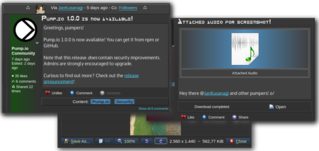
I've just tagged the development version of my Pump.io client, Dianara, as "RC", hoping for a final release by the end of next week.
The most noticeable changes, as illustrated in the screenshot, are:
- Items highlighted due to filtering rules will show the reason for highlighting. As visible on the left side of the screenshot, that post was highlighted due to it matching the words "Pump.io" and "Security" in the post contents or title, which I had configured as a filtering rule previously.
- After downloading an attachment, a button will appear, to open the file using the default program from the user's desktop environment. So if a post has audio attached, after saving it, an "Open" button will appear (right side of the screenshot), and clicking it will open the file with Amarok, Qmmp, VLC, or whatever your default audio player is =)
- Added buttons to rotate images in the image viewer. Also via keyboard, with Ctrl+Left and Ctrl+Right, and via context menu. This is mostly for the case of images uploaded upside down, or not taken in the right direction for whatever reason. (Lower part of the screenshot)
- Some windows that used to block input (modal) to the rest of the program until they were closed, such as posts opened from the Meanwhile feed, will be independent now. You can keep them around for as long as you like, until you close the program.
Also, building Dianara with Qt 5 is officially supported now (that's how I've been using it for a while). Note that your system will need a Qt 5 build of the QOAuth library, which most GNU/linux distributions don't provide yet. Mageia 6 does, and so does openSUSE (in a separate repository). This required some changes in the buildsystem. Hopefully it will still build successfully for everyone. If it doesn't, your QOAuth might be missing a feature file (.prf).
If your system's language is German, you'll also have a full German translation, thanks to @Bd Sn, who got the translation up to date again!
As always, code is here: gitlab.com/dianara/dianara-dev, and instructions to build can be found in the INSTALL file.
Testing and feedback would be most appreciated!
Cheers! o/
 I'm trying to build Dianara with Qt5 for Windows, and practically nobody are brave enought to supply these libraries. and unfortunately, I'm searching to get it and compile it to be used for Windows-based builds using entirely Libre SDK's such MinGW and QT.
I'm trying to build Dianara with Qt5 for Windows, and practically nobody are brave enought to supply these libraries. and unfortunately, I'm searching to get it and compile it to be used for Windows-based builds using entirely Libre SDK's such MinGW and QT.
>> eliotime™:
“I'm trying to build Dianara with Qt5 for Windows [...]”
Maybe installing Qt Creator could help. I have no idea, I don't have any MSwindows machines.
I guess not all software is available for MSwindows, like some people like to claim =)
JanKusanagi at 2016-09-30T13:30:37Z
eliotime™ likes this.

